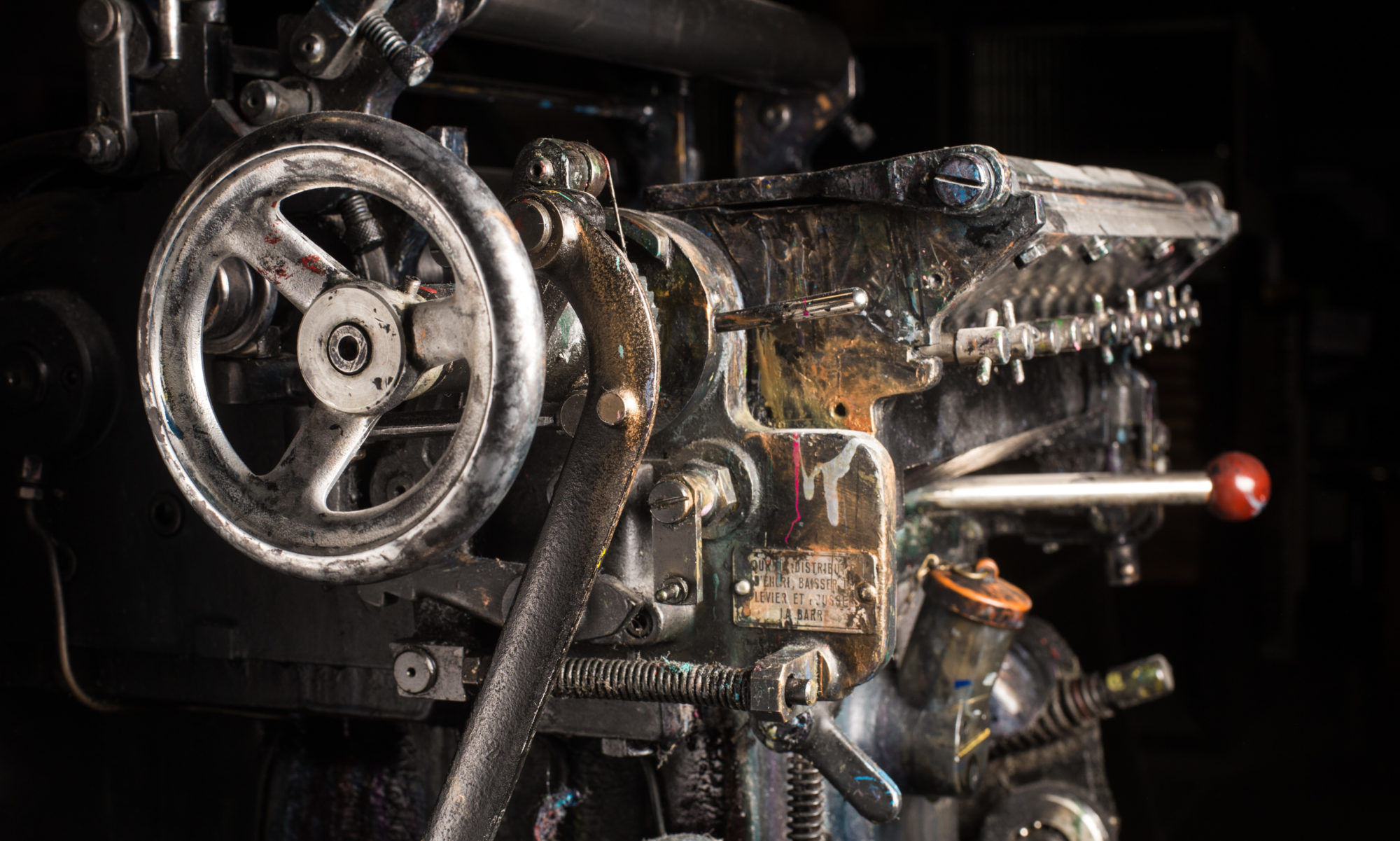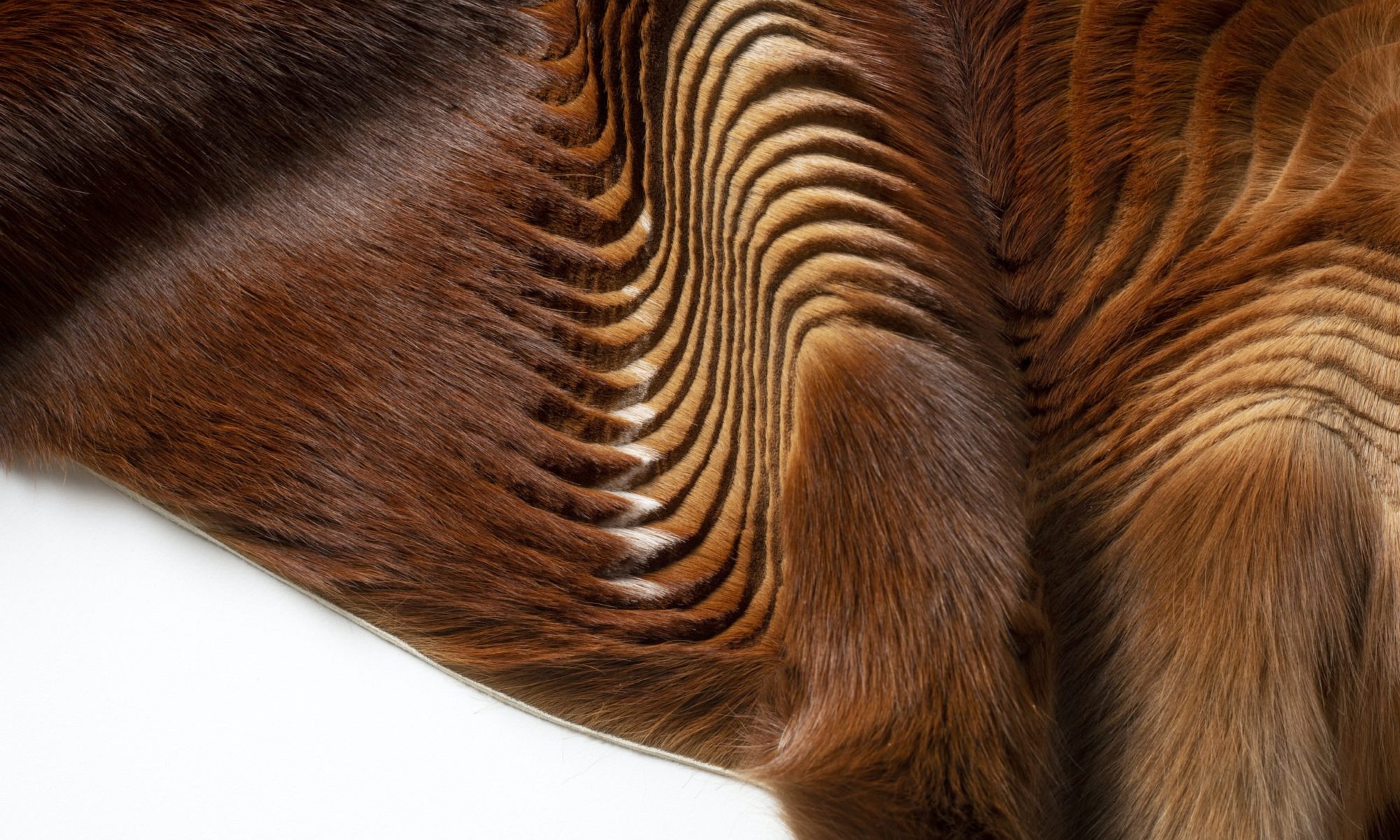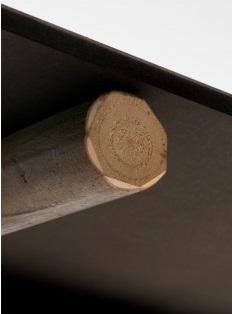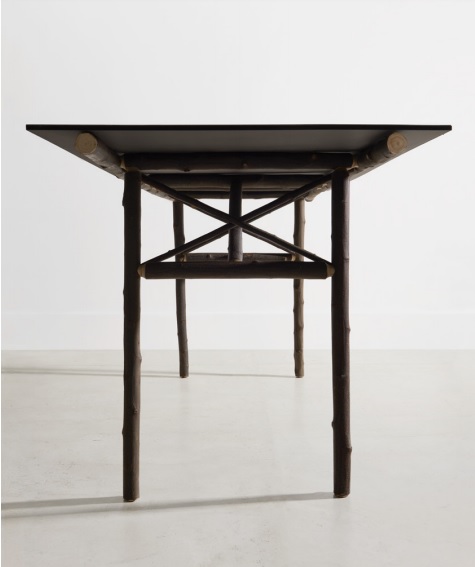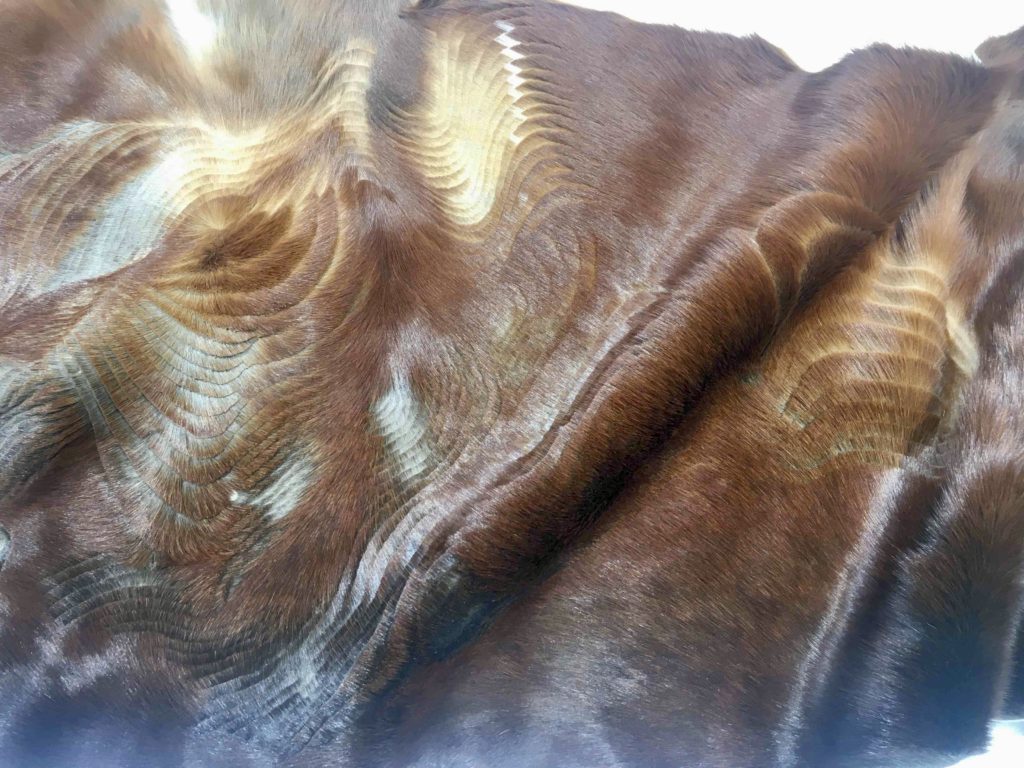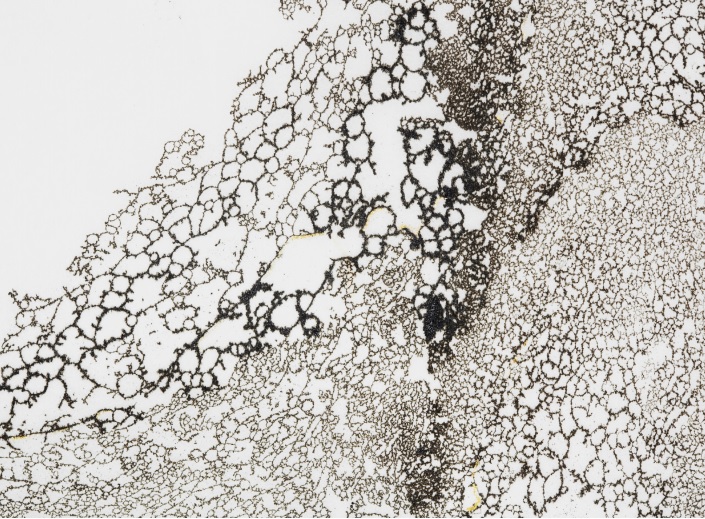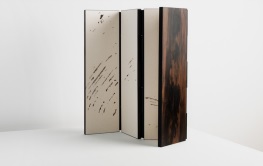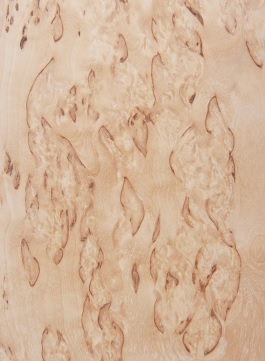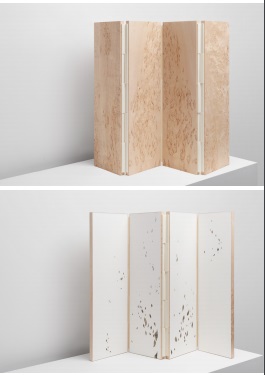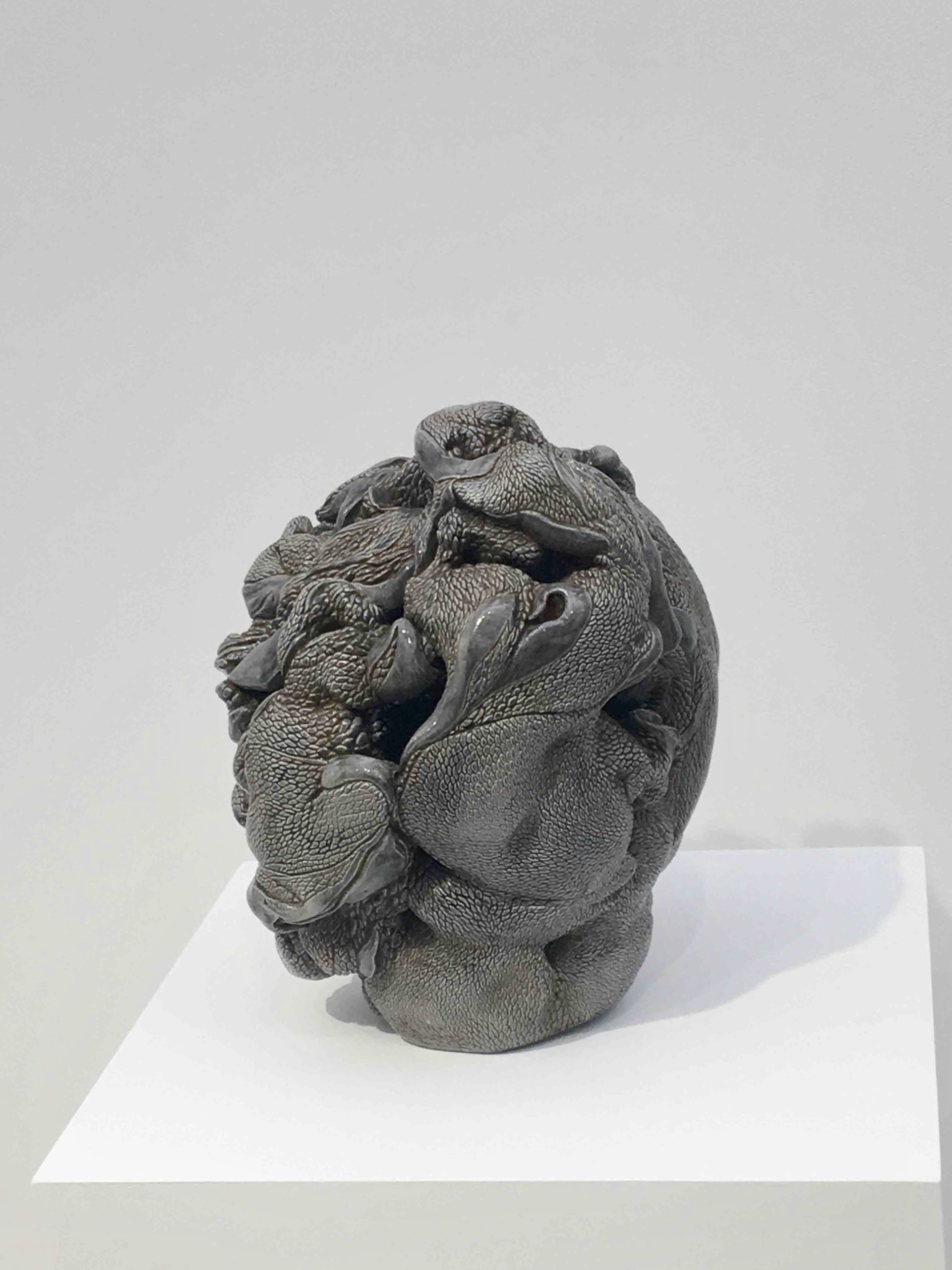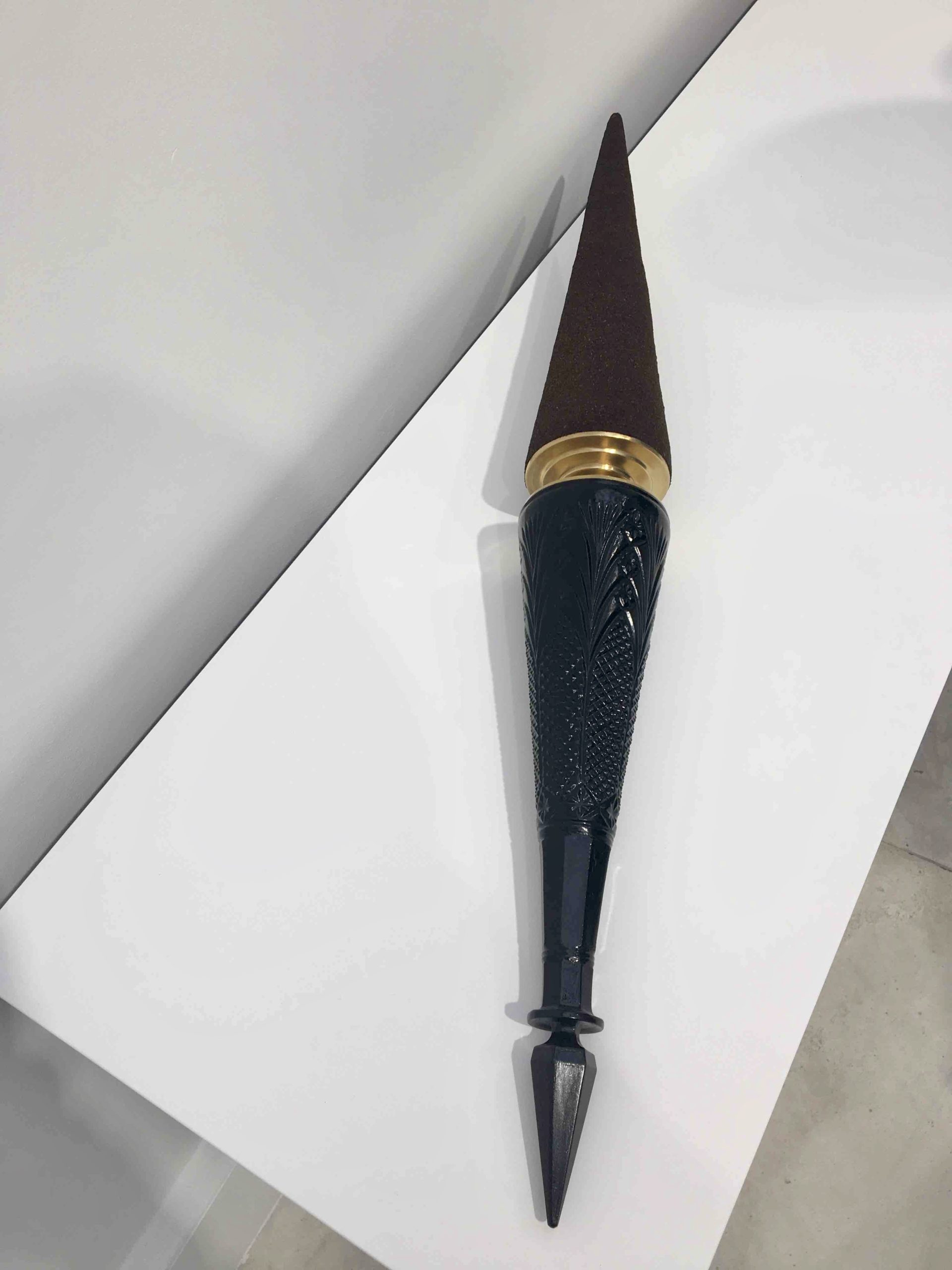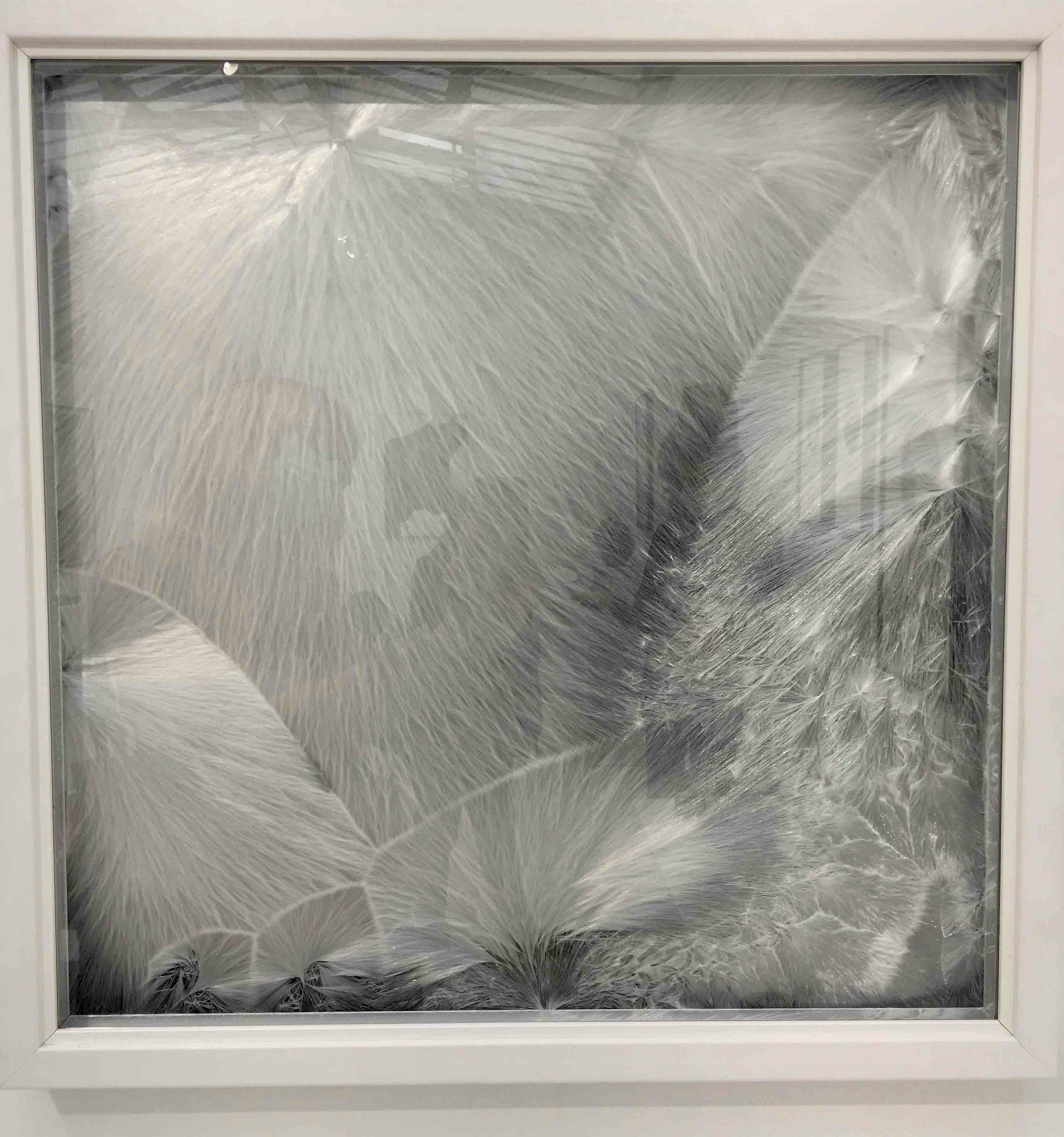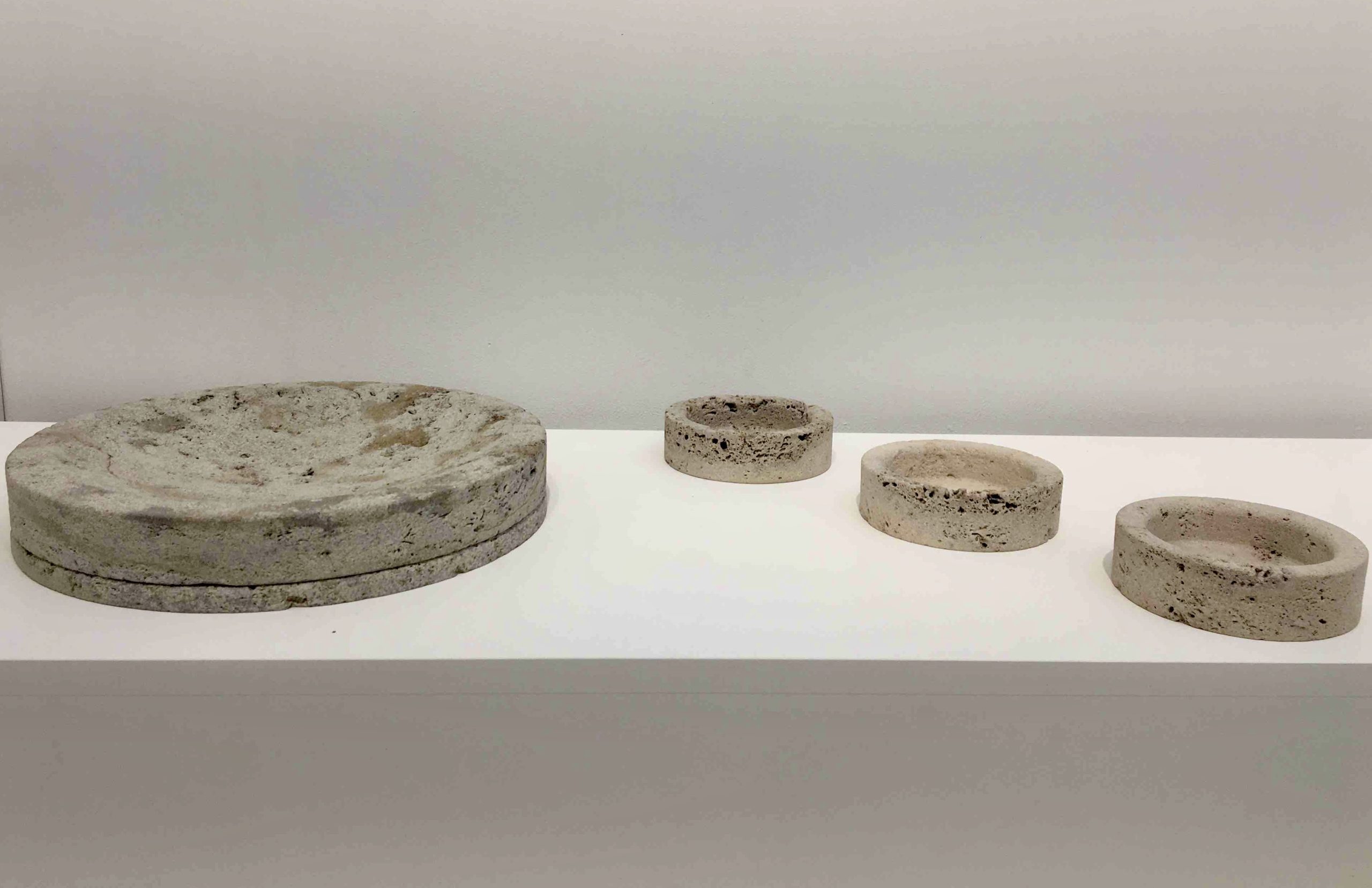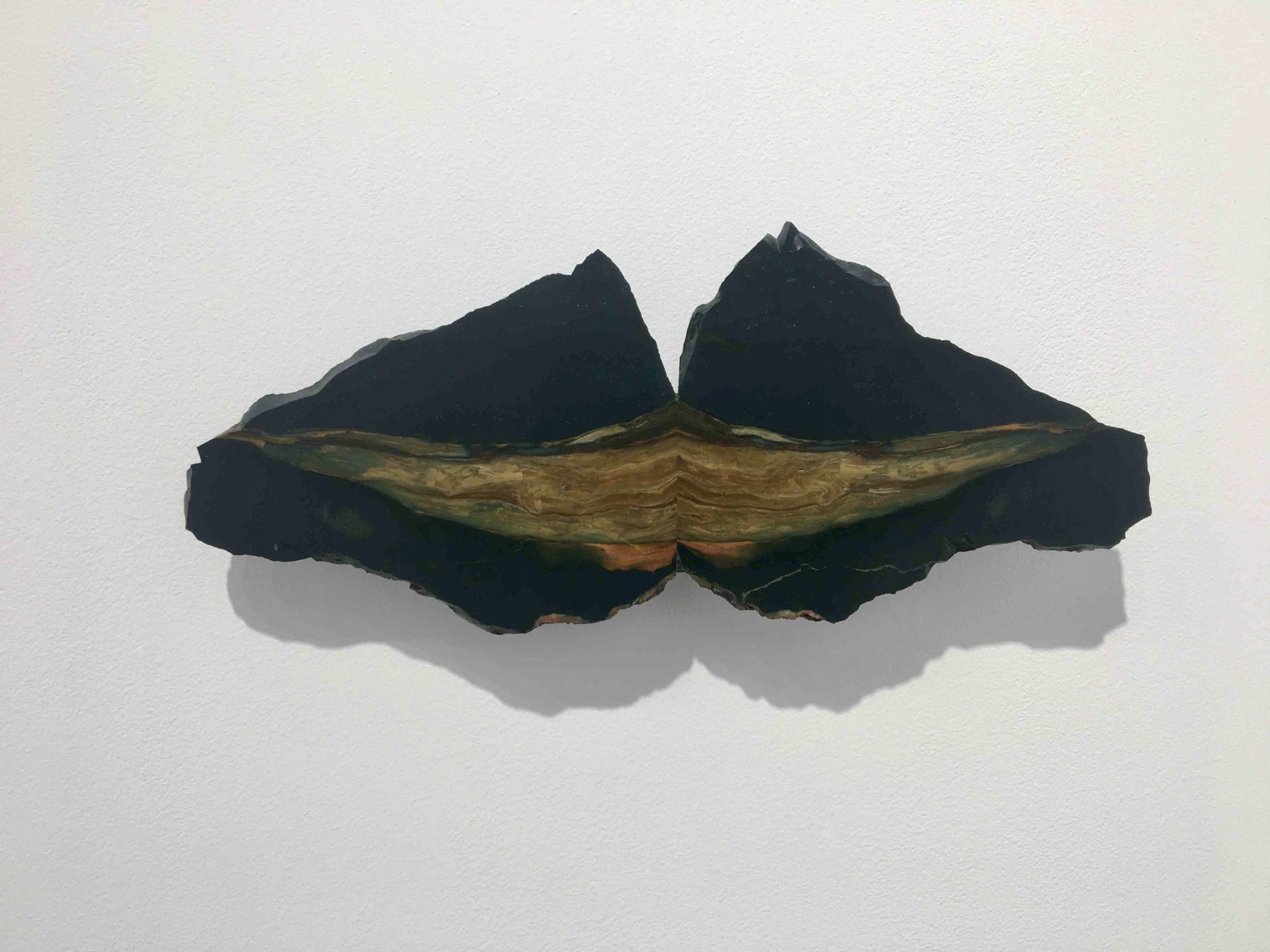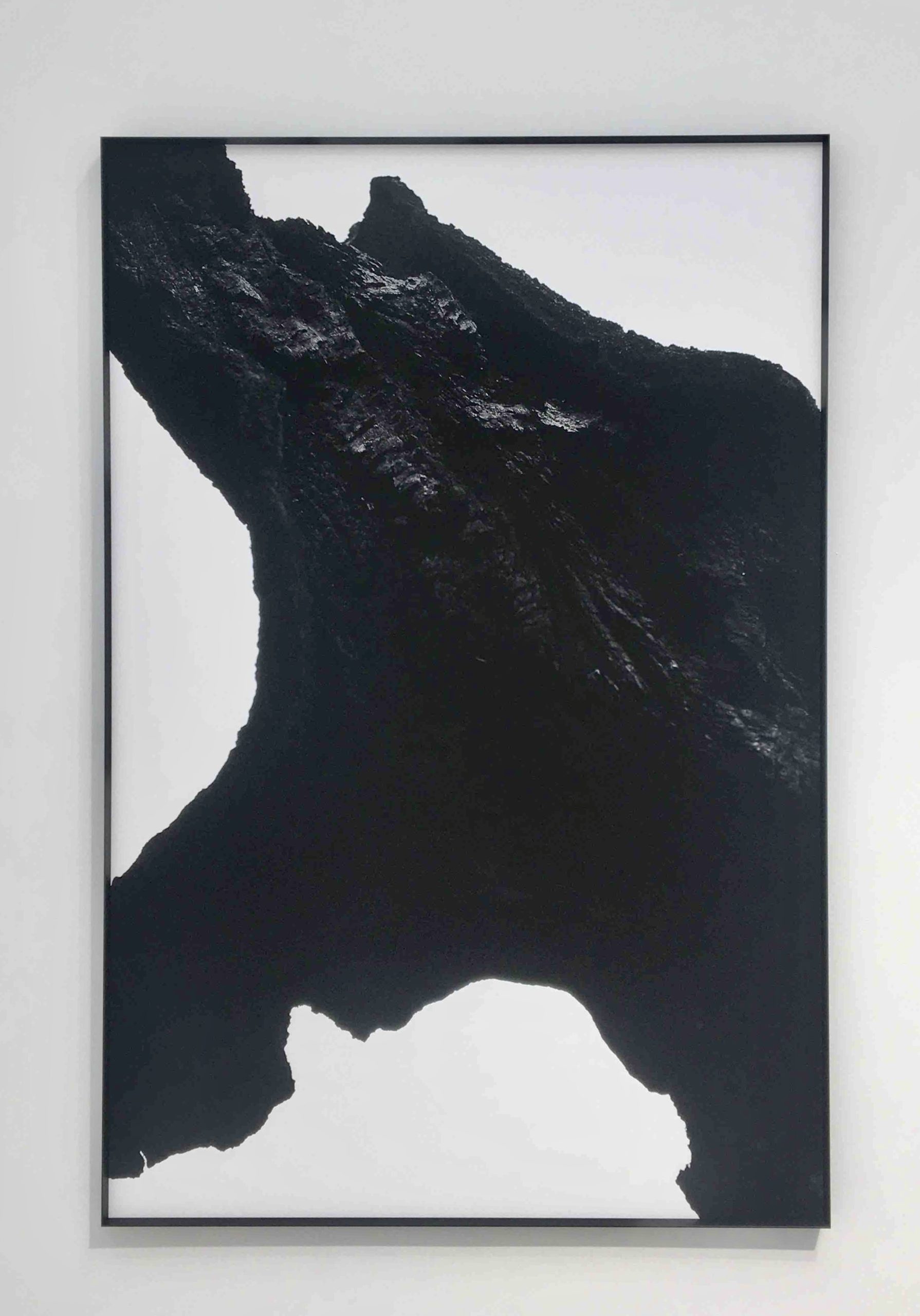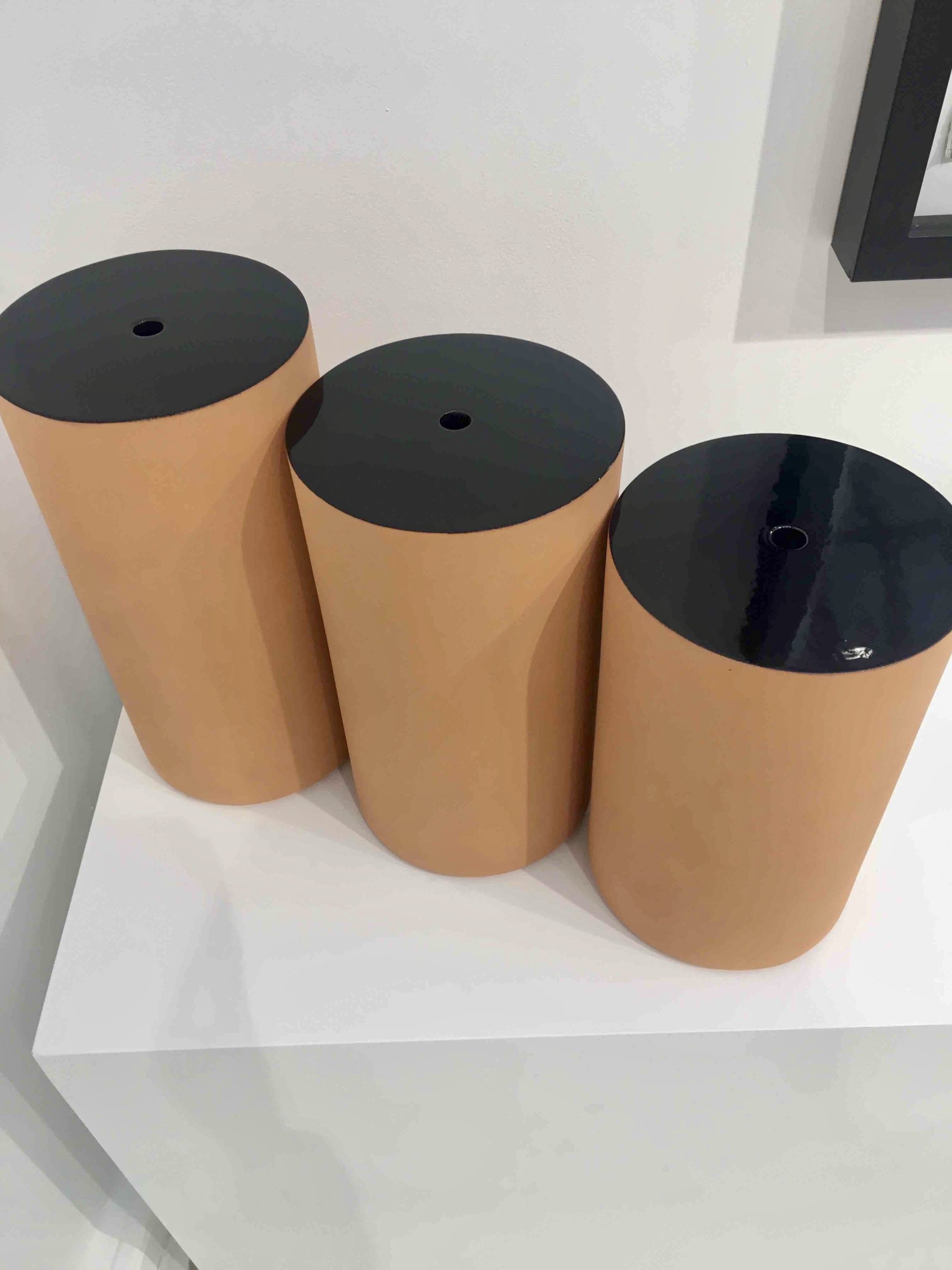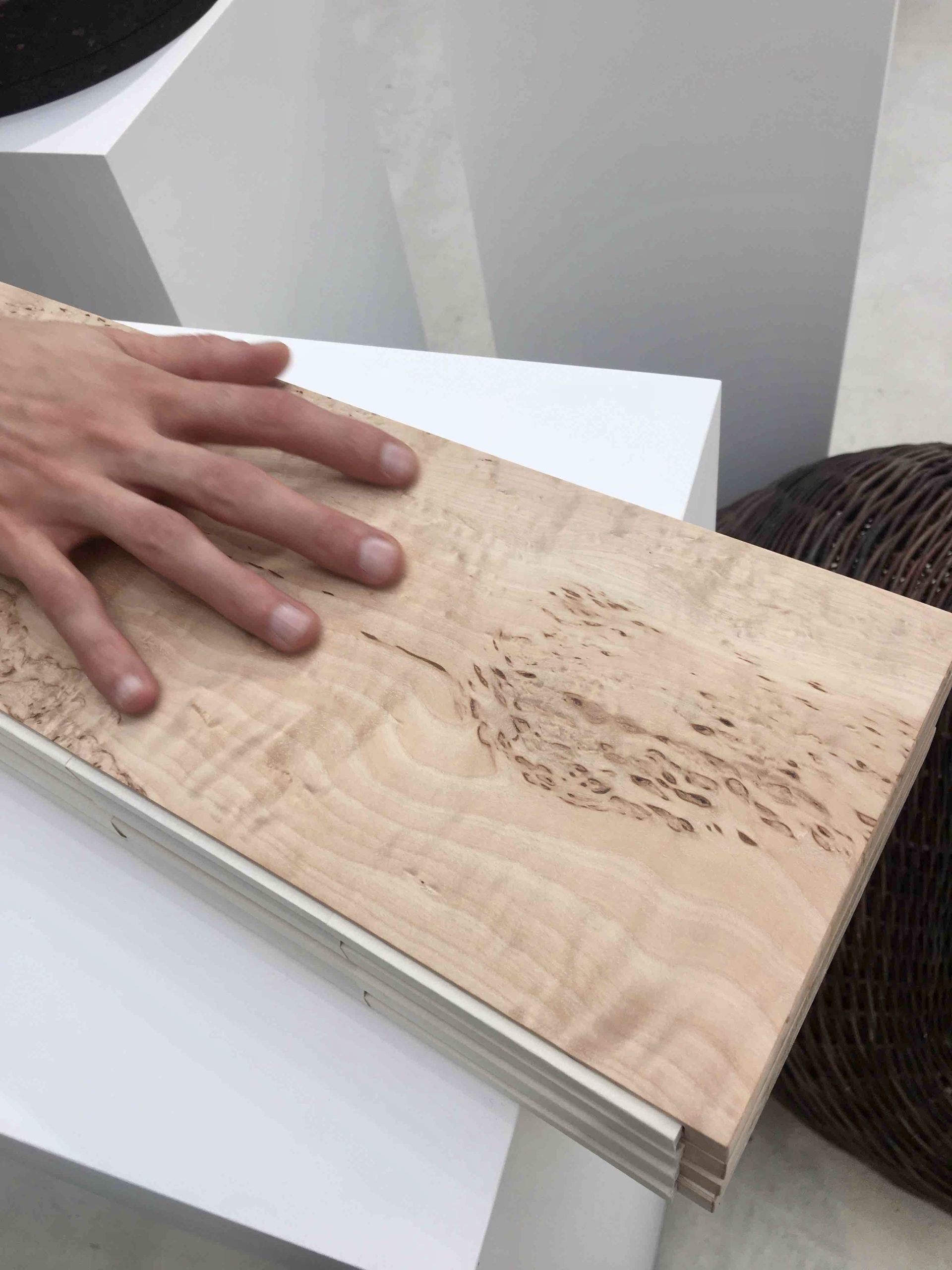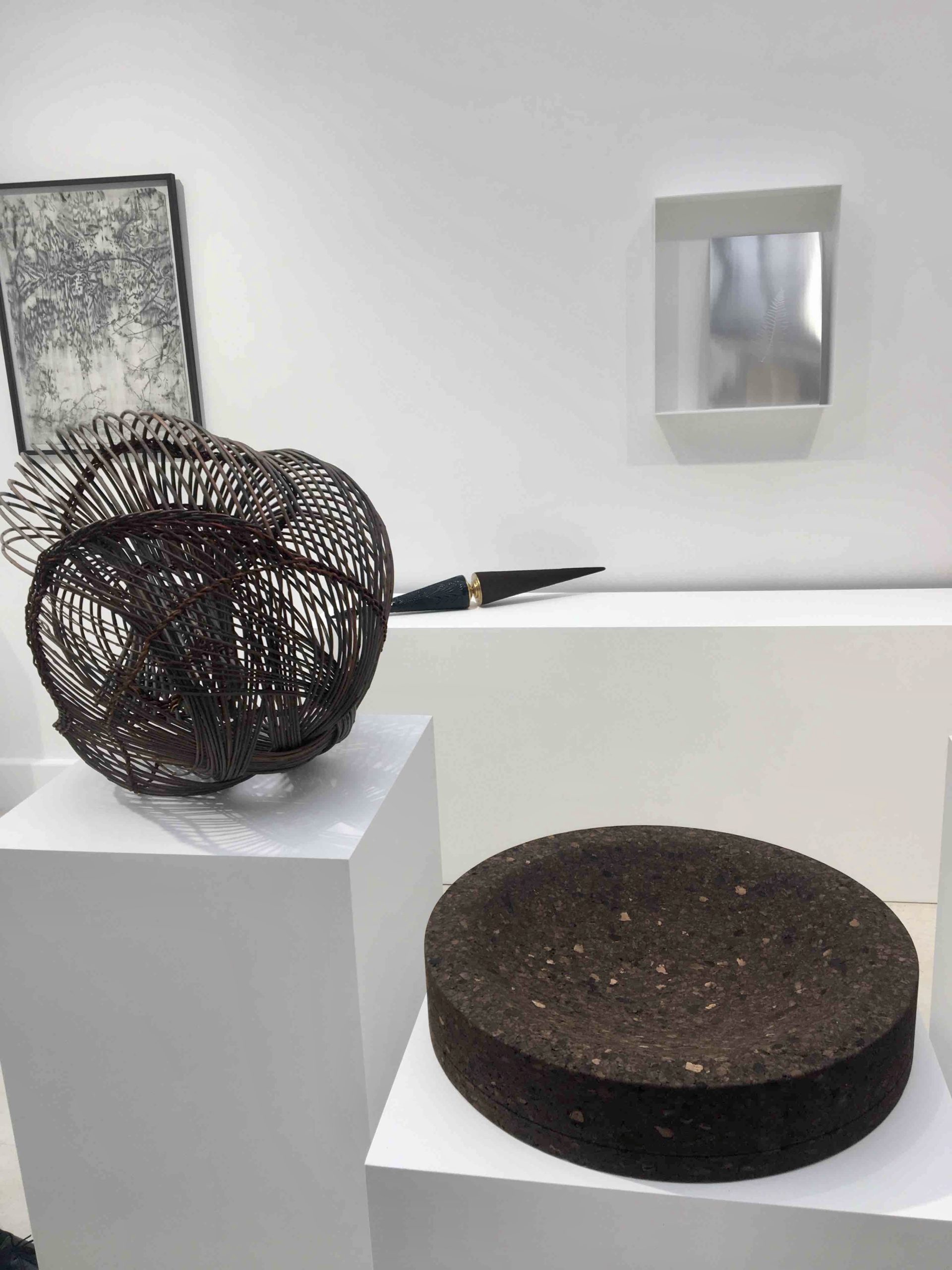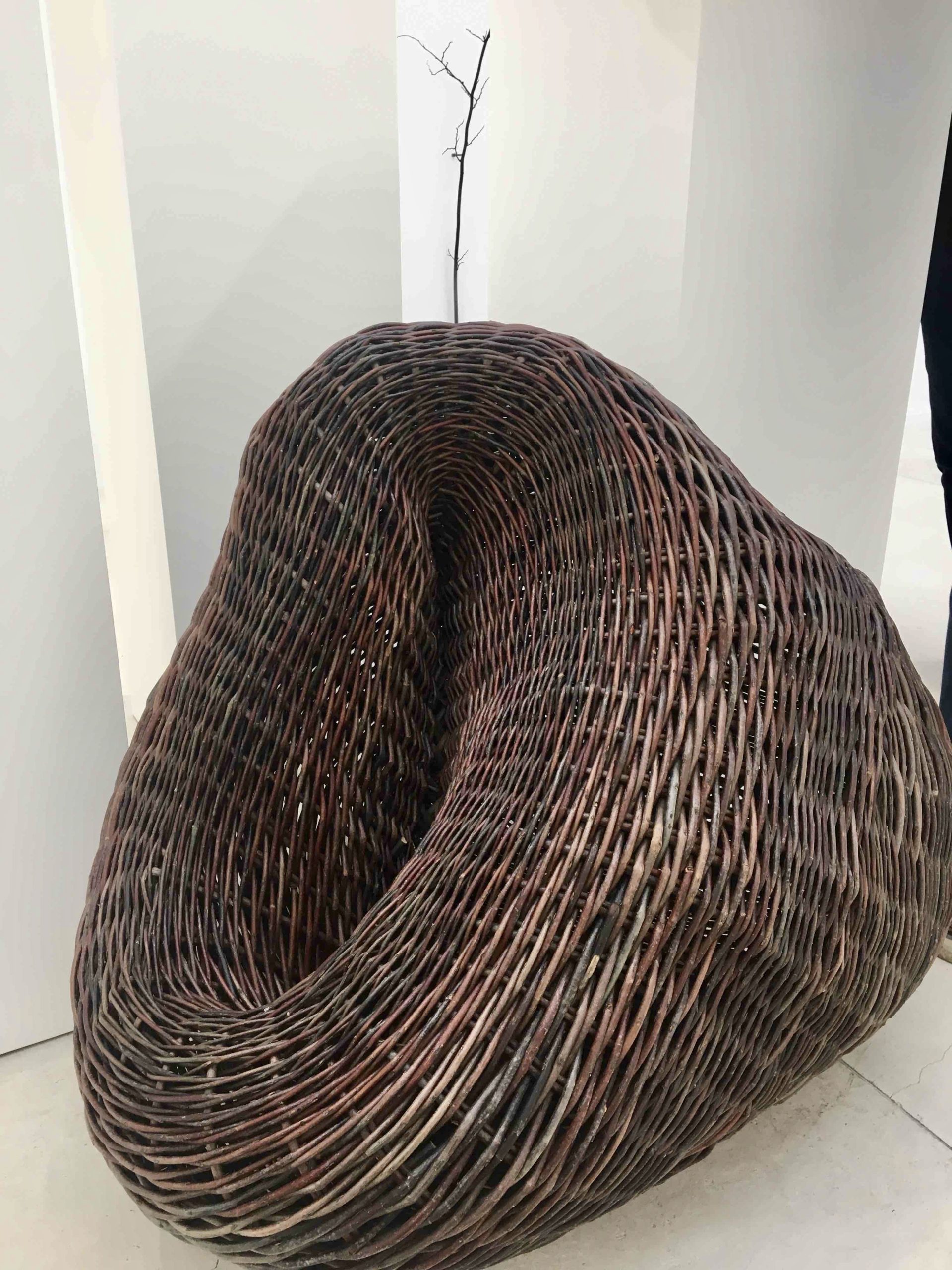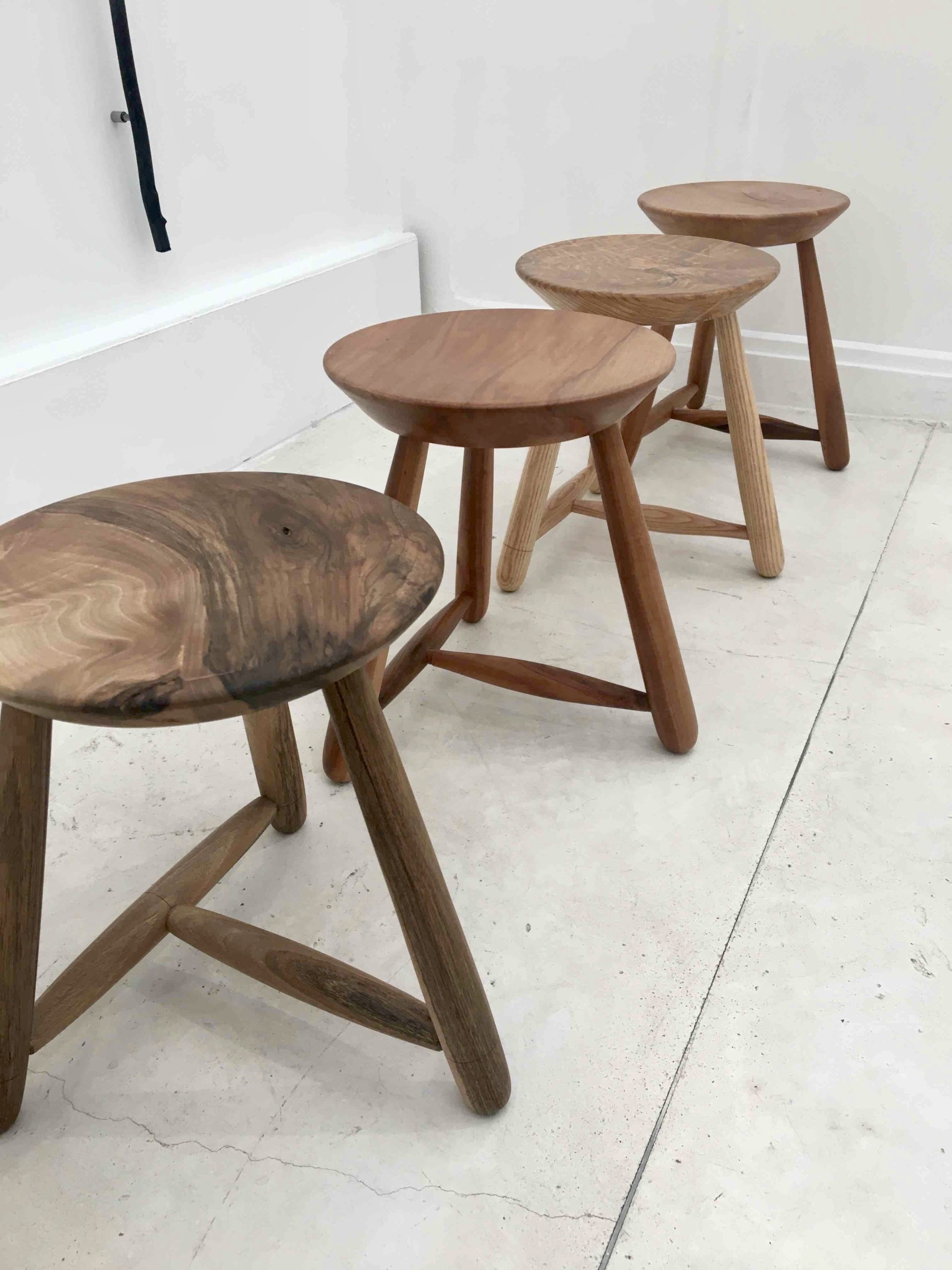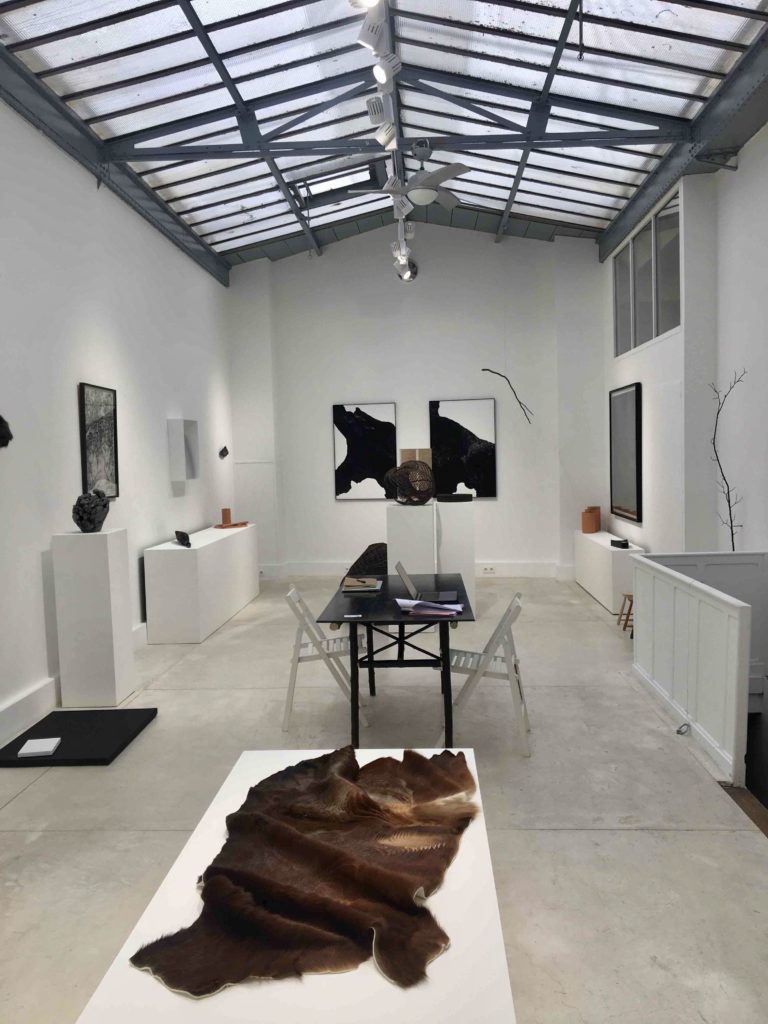
Une des révélations de 2020, malgré les fermetures et les annulations d’événements, était sans conteste la proposition de Sinople, curateur et éditeur d’œuvres et objets d’art aux frontières de l’art, du design et du craft. Second volet d’un opus dédié à la nature, “Paysage intérieur” nous a transporté dans un univers intimiste et sensible, dont la poésie émerge autant de la maîtrise technique que de la beauté formelle. Retour sur quelques pièces emblématiques mêlant parfaitement savoir-faire, innovation et inspiration.
Pour le dessin et la conception de PROTOTYPE, un mot allait définir la ligne directrice et artistique, la réflexion d’Hugo Haas et Arnaud Mainardi : la forêt. Elle est le lieu de création du feuillardier, artisan aux techniques vernaculaires qui crée mobilier et objets à partir de méthodes d’assemblage ou de cintrage de jeunes branches de châtaignier. Lieu fragile de ressources et panorama entre terre et ciel, elle a également inspiré les lignes de cette table de travail qui se singularise par sa sobriété et rusticité contemporaine associant matériau premier et matériau industriel : châtaignier et acier. Tel un détail de la voûte céleste portée par les branchages, PROTOTYPE se présente comme un morceau de forêt.
Designer textile, Marion Chopineau conçoit des structures textiles contemporaines qui naissent le plus souvent de l’altération, de l’hybridation et du détournement de techniques artisanales. Elle explore le vivant et le textile dans une approche artistique plus sculpturale notamment illustrée par ses peaux insculpées véritables totems, tapisseries ou installations. Inspirés par la cartographie, les vues aériennes et les mouvements d’éléments naturels — l’eau suivant le lit de la rivière, le vent dans les hautes herbes — les mouvements organiques insculpés par l’artiste évoquent les traces d’anciens rituels, les signes et symboles pariétaux gravés dans la roche. Ils font écho aux notions de migration et de nomadisme, de flux à travers un territoire.
Pour amener à regarder et à s’étonner des manifestations du vivant, Léa Barbazanges réalise des assemblages avec des matériaux naturels et en met en exergue leur spécificité et leur beauté. Nervures, ramifications, transparences, brillances, reflets, sont le résultat d’un geste patient, méticuleux et rationnel. Poétique feuille d’aluminium modelée avec la complicité d’Isaak Rensing (tôlier formeur spécialiste de la restauration de véhicules de collection), « Filicineae » renouvelle l’exercice d’une empreinte végétale laissée à la surface du métal que l’artiste et l’artisan avaient initié avec Magnolia macrophylla — les masques. Tel un fossile contemporain, avec une extrême précision, l’œuvre laisse deviner chaque élément du graphisme naturel de la fougère commune qui se perd et se révèle au grès des reflets qui dansent sur le métal.
Lorsque Martine Rey rencontre la laque végétale « Urushi » au Japon, l’artiste fait face à un matériau dont la technique d’application croise son propre cheminement. Art prestigieux, elle est cependant un art d’ornement toujours lié à « l’habillage » d’objets. Tout en apprenant les gestes constitutifs de cette pratique séculaire, l’artiste libère un projet dans lequel la laque vient désormais mettre à nu l’objet anonyme, abandonné, délaissé. Elle détourne l’attention vers son histoire pour en décrire la profondeur insoupçonnée. Surface et reflet, la laque quitte ses atours protecteurs et décoratifs pour devenir une matière précieuse à part entière, la plume du temps écoulé sur les « choses ordinaires » magnifiées en reliques, en talismans.
Atelier Alba, fondé par Celia Suzanne & Erwann Larbre, est un atelier spécialisé dans le développement et la création de décors marquetés d’exception. Mettant en jeux leur passion commune pour les techniques ancestrales de la marqueterie et une démarche de recherche et développement, l’ambition de ses fondateurs est de déstabiliser le regard en proposant une approche inédite et contemporaine de leurs savoir-faire et de la matière. Sa curiosité pour les différents savoir-faire l’amène à faire se croiser des techniques et des matières fondamentalement opposées pour réconcilier traditions et innovation. La série de paravents développée avec Sinople s’inspire ainsi de l’objet rituel japonais, de sa fonction symbolique et ornementale souvent associée à des représentations de la Nature, et de la matière dont il se pare. Replié, l’artefact ne laisse voir que les veinages de son placage rare et précieux. Ouvert, par soustraction de papier mûrier marqueté de parchemin, l’écran révèle les spécificités du bois ; tantôt les cernes de l’arbre dont il provient, tantôt les élégants et surprenants motifs de la loupe. Par un habile jeux de composition, c’est un paysage onirique qui s’offre à voir et à discrétion.
Pour découvrir les autres créateurs et créations présentées, téléchargez le catalogue.
Merci à Julien Strypsteen et Éric-Sébastien Faure-Lagorce, fondateurs de Sinople, pour leur aimable participation et autorisation de reproduction de leur catalogue (tous droits réservés).
The motionless journeys of Sinople
One of the revelations of 2020, despite the closures and cancellations of events, was undoubtedly the proposal of Sinople, curator and publisher of works and objects of art at the frontiers of art, design and craft.
The second part of an opus dedicated to nature, “Interior Landscape” transported us to an intimate and sensitive universe, whose poetry emerges as much from technical mastery as from formal beauty. Here’s a look back at some emblematic pieces that perfectly combine know-how, innovation and inspiration.
For the drawing and conception of PROTOTYPE, one word would define the guiding and artistic line, the reflection of Hugo Haas and Arnaud Mainardi: the forest. It is the cooper’s creative place, a craftsman using vernacular techniques to creates furniture and objects using methods of assembling or bending young chestnut branches. A fragile place of resources and a panorama between earth and sky, which also inspired the lines of this work table which stands out for its sobriety and contemporary rusticity combining raw material and industrial material: chestnut and steel. Like a detail of the celestial vault carried by the branches, PROTOTYPE appears like a piece of forest.
Textile designer, Marion Chopineau designs contemporary textile structures that are most often born from the alteration, hybridization and diversion of artisanal techniques. She explores living things and textiles in a more sculptural artistic approach, particularly illustrated by her sculpted skins, real totems, tapestries or installations. Inspired by cartography, aerial views and the movements of natural elements – the water following the bed of the river, the wind in the tall grass – the organic movements inspired by the artist evoke traces of ancient rituals, parietal signs and symbols carved into the rock. They echo the notions of migration and nomadism, of flows through a territory.
To make people look and be amazed at the manifestations of the living, Léa Barbazanges creates assemblies with natural materials and highlights their specificity and beauty. Ribs, ramifications, transparencies, shine, reflections, are the result of a patient, meticulous and rational gesture. Poetic aluminum foil modeled with the help of Isaak Rensing (sheet metal worker specialist in the restoration of vintage vehicles), “Filicineae” renews the exercise of a plant imprint left on the surface of the metal that the artist and the artisan had initiated with Magnolia macrophylla – the masks. Like a contemporary fossil, with extreme precision, the work hints at every element of the natural graphics of the common fern which is lost and revealed in the sandstone reflections dancing on the metal.
When Martine Rey meets the « Urushi » plant lacquer in Japan, the artist is faced with a material whose application technique crosses her own path. A prestigious art, however ornamental, always linked to the « dressing » of objects. While learning the constitutive gestures of this secular practice, the artist releases a project in which lacquer now comes to lay bare the anonymous, abandoned, neglected object. She diverts attention to her story to describe its unsuspected depth. Surface and reflection, the lacquer leaves its protective and decorative garb to become a precious material in its own right, the pen of time elapsed on « ordinary things » magnified in relics, in talismans.
Atelier Alba, founded by Celia Suzanne & Erwann Larbre, is a workshop specializing in the development and creation of exceptional inlaid decorations. Bringing into play their common passion for ancestral marquetry techniques and a research and development approach, the ambition of its founders is to destabilize the gaze by offering a new and contemporary approach to their know-how and the material. Their curiosity for different skills leads them to combine techniques and fundamentally opposed materials to reconcile traditions and innovation. The series of screens developed with Sinople is thus inspired by the Japanese ritual object, its symbolic and ornamental function often associated with representations of Nature, and the material with which it is adorned. Folded up, the artifact only shows the veins of its rare and precious veneer. Open by subtracting mulberry paper inlaid with parchment, the screen reveals the specificities of wood; sometimes the rings of the tree from which it comes, sometimes the elegant and surprising patterns of the magnifying glass. Through a skillful play of composition, it is a dreamlike landscape that offers itself to be seen and at discretion.
To discover the other creators and creations presented, download the catalogue.
Thanks to Julien Strypsteen and Éric-Sébastien Faure-Lagorce, founders of Sinople, for their kind participation and permission to reproduce their catalog (all rights reserved).
